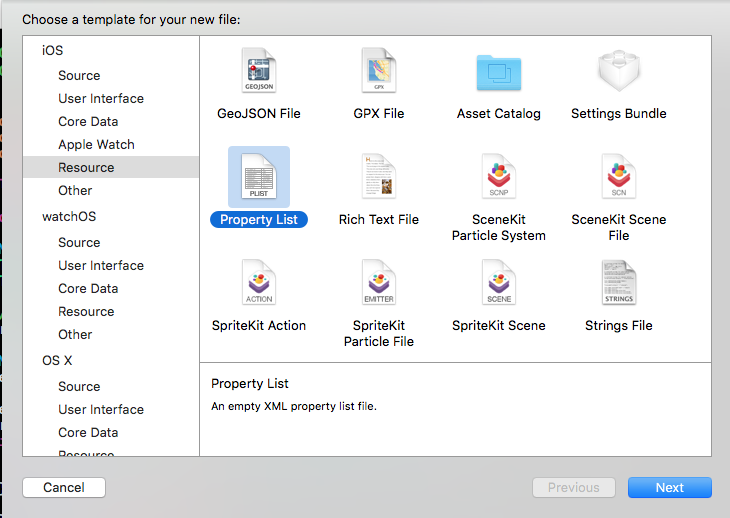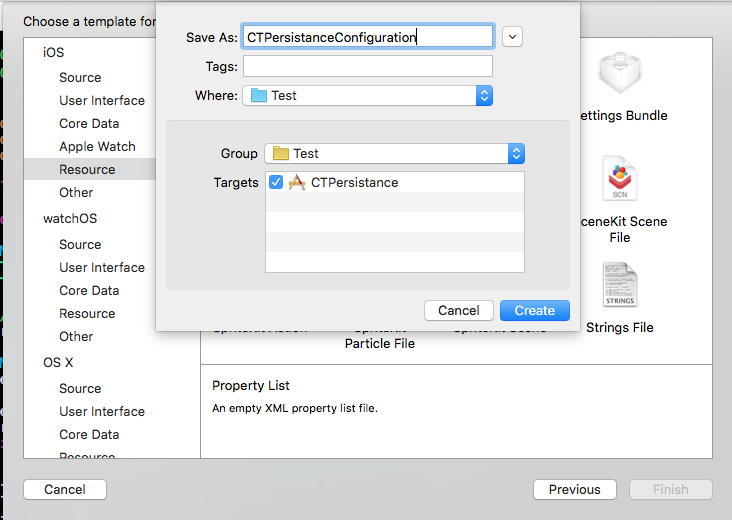Persistence, Persistance, lol.
2016-06-03: make migration works better! I'm still maintaining this pod~ Welcome issues and PRs, and I'm glad to hear you are using this pod in your project.
define the marco CTPersistanceShowSQLLog to show SQL log.
#CTPersistance
CTPersistance can be used as a Model Layer in iOS App development, maybe can used for MacOSX develop, but I'm not tested yet. See CTPersistance Reference for more infomation.
Any object who conforms to <CTPersistanceRecordProtocol> can be a record and can be accepted by CTPersistance, even your customized UIView. see issue 21
#Install (CocoaPods)
pod 'CTPersistance'
#Features
- Insert, Delete, Update, Read
- support database migration
- transaction
- multi-thread
- use SQL directly with CTPersistanceTable instance
go to Build Phases and add sqlite3 into your library list.
#Quick Try (Insert, Delete, Update, Read)
Notice: Any object who conforms to <CTPersistanceRecordProtocol> can be a record and can be accepted by CTPersistance, even your customized UIView. see issue 21. Thus, you can handle any type of object with this protocol. In this demo we extends CTPersistanceRecord for convenience.
@interface TestRecord : CTPersistanceRecord
@property (nonatomic, copy) NSNumber *identifier;
@property (nonatomic, copy) NSString *text;
@end
2. create TestTable which extends from CTPersistanceTable, and conforms to CTPersistanceTableProtocol like this:
#import "CTPersistance.h"
@interface TestTable : CTPersistanceTable <CTPersistanceTableProtocol>
@end
@implementation TestTable
#pragma mark - CTPersistanceTableProtocol
- (NSString *)databaseName
{
return @"TestDataBase.sqlite";
}
- (NSString *)tableName
{
return @"TestTable";
}
- (NSDictionary *)columnInfo
{
return @{
@"identifier":@"INTEGER PRIMARY KEY AUTOINCREMENT",
@"text":@"TEXT"
};
}
- (Class)recordClass
{
return [TestRecord class];
}
- (NSString *)primaryKeyName
{
return @"identifier";
}
@end
#import "ViewController.h"
#import "TestTable.h"
#import "TestRecord.h"
@interface ViewController ()
@end
@implementation ViewController
- (void)viewDidLoad {
[super viewDidLoad];
/* insert */
NSError *error = nil;
TestTable *table = [[TestTable alloc] init];
TestRecord *record = [[TestRecord alloc] init];
record.text = @"hello, world!";
[table insertRecord:record error:&error];
NSLog(@"%@", record.identifier); // 1
/* read */
record = (TestRecord *)[table findLatestRecordWithError:&error];
NSLog(@"%@", record.text); // hello, world!
/* update */
record = (TestRecord *)[table findWithPrimaryKey:@(1) error:&error];
record.text = @"hello, universe!";
[table updateRecord:record error:&error];
/* delete */
[table deleteRecord:record error:&error];
}
@end
#Quick Try (Migration)
NOTICE:
You should use CTPersistanceQueryCommand to do your migration job, and MUST USE initWithQueryCommand: to create your table in Migration Steps. Otherwise will results an infinite loop.
DO NOT USE init: WHEN CREATE A TABLE, USE initWithQueryCommand: INSTEAD
#import <Foundation/Foundation.h>
#import "CTPersistanceMigrator.h"
@interface MigrationStep1_0 : NSObject <CTPersistanceMigrationStep>
@end
NOTICE:
you can only use CTPersistanceQueryCommand to do your migration job, and DO NOT use CTPersistanceTable
#import "MigrationStep1_0.h"
#import "TestTable.h"
@implementation MigrationStep1_0
- (void)goUpWithQueryCommand:(CTPersistanceQueryCommand *)queryCommand error:(NSError *__autoreleasing *)error
{
[queryCommand dropTable:@"user"];
}
- (void)goDownWithQueryCommand:(CTPersistanceQueryCommand *)queryCommand error:(NSError *__autoreleasing *)error
{
// do nothing
}
@end
3. create the migrator which extends from CTPersistanceMigrator and confirm to <CTPersistanceMigratorProtocol>
#import "CTPersistanceMigrator.h"
@interface TestMigrator : CTPersistanceMigrator <CTPersistanceMigratorProtocol>
@end
import the step object you just created, and put them into migrationStepDictionary, migrationVersionList is the order to migrate steps, the version list must start with kCTPersistanceInitVersion.
#import "TestMigrator.h"
#import "CTPersistanceConfiguration.h"
#import "MigrationStep1_0.h"
#import "MigrationStep2_0.h"
@implementation TestMigrator
#pragma mark - CTPersistanceMigratorProtocol
- (NSDictionary *)migrationStepDictionary
{
return @{
@"1.0":[MigrationStep1_0 class],
@"2.0":[MigrationStep2_0 class]
};
}
- (NSArray *)migrationVersionList
{
return @[kCTPersistanceInitVersion, @"1.0", @"2.0"];
}
the key is the name of the database which you want to migrate. the value is the name of the class name of the migrator.
CTPersistance will try to match the key with the name of database to decide which migrator to use, and you can use Regular Express Patten for the key.
you can try migration now!
TestTable *testTable = [[TestTable alloc] init];
[CTPersistanceTransaction performTranscationWithBlock:^(BOOL *shouldRollback) {
NSUInteger count = 10000;
while (count --> 0) {
TestRecord *record = [[TestRecord alloc] init];
record.age = @(count);
record.name = @"casa";
record.tomas = @"casa";
[testTable insertRecord:record error:NULL];
}
*shouldRollback = NO;
} queryCommand:testTable.queryCommand lockType:CTPersistanceTransactionLockTypeDefault];
see also TestCaseAsync.m
NOTICE: You should always create a new table in the async block.
[[CTPersistanceAsyncExecutor sharedInstance] performAsyncAction:^{
NSUInteger count = 500;
NSError *error = nil;
// always create table which you want to manipulate data in asyn block!!!
TestTable *testTable = [[TestTable alloc] init];
while (count --> 0) {
TestRecord *record = [[TestRecord alloc] init];
record.age = @(count);
record.name = @"name";
record.tomas = @"tomas";
[testTable insertRecord:record error:&error];
if (error) {
NSLog(@"error is %@", error);
NSException *exception = [[NSException alloc] init];
@throw exception;
}
}
} shouldWaitUntilDone:NO];


